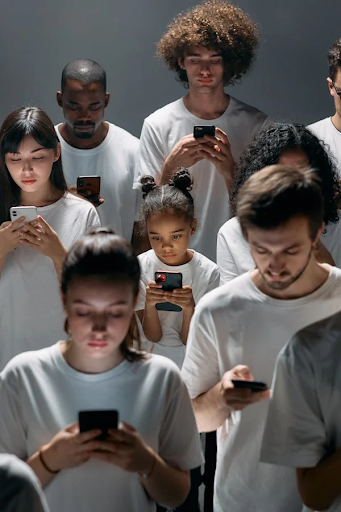The Future of Virtual Reality in Everyday Life
Virtual Reality (VR) is no longer the stuff of science fiction. Once imagined as a distant dream, it is now a rapidly evolving technology that's gradually becoming part of our everyday lives. From gaming and education to healthcare and communication, VR is set to reshape how we interact with the world around us. In this article, we’ll explore the future of Virtual Reality in everyday life, examining its potential, its benefits, and the ways it could transform how we live, work, and play.
A Brief Look at Virtual Reality Today
Before diving into the future, it’s worth understanding where VR stands today. Virtual Reality is essentially a computer-generated simulation that immerses users in a three-dimensional environment. Using headsets and other sensory equipment, users can explore virtual spaces, interact with objects, and even experience sights and sounds as if they were physically present in a different world.
VR technology has already made significant strides, especially in the gaming industry. Devices such as the Oculus Quest, PlayStation VR, and HTC Vive have brought immersive experiences to millions of homes. However, the future of Virtual Reality in everyday life extends far beyond just entertainment.
Education and Learning: A New Reality
One of the most promising applications of VR lies in education. Traditional classroom settings can be limiting, especially when teaching abstract concepts or history. Imagine students exploring ancient Rome, walking through the Colosseum, or conducting chemistry experiments in a virtual lab without any danger.
VR has the potential to make learning more engaging and accessible. It offers a level of interactivity that books and lectures simply can’t match. In the future, virtual field trips, immersive history lessons, and hands-on scientific simulations may become standard in schools and universities around the world. This would not only enhance comprehension but also cater to diverse learning styles.
Additionally, adult learners and professionals could benefit from virtual training programmes. From surgeons practising complex procedures to pilots undergoing flight simulations, VR provides safe, realistic environments for mastering skills. The future of Virtual Reality in everyday life could revolutionise how we acquire knowledge and expertise.
Healthcare: A Virtual Lifeline
Healthcare is another area where VR is already making waves and holds immense promise for the future. In medical training, VR allows students to explore the human body in detail, simulate surgeries, and diagnose virtual patients. But the benefits don’t stop there.
For patients, VR can be a therapeutic tool. It has been used to treat anxiety, phobias, and PTSD through exposure therapy. People suffering from chronic pain can use VR for distraction-based pain relief. Rehabilitation programmes are also incorporating VR to help stroke victims and those with mobility issues regain movement through engaging and interactive therapy sessions.
Looking ahead, VR could play a critical role in remote healthcare. Imagine visiting a virtual clinic, consulting with a doctor in a 3D environment, or receiving physiotherapy instructions in a fully immersive setup from the comfort of your home. The future of Virtual Reality in everyday life could mean a more personalised, efficient, and accessible healthcare experience for all.
Remote Work and Virtual Offices
The global shift towards remote work has been one of the most significant changes in recent years. As organisations embrace hybrid and remote work models, VR is poised to redefine the workplace. Instead of staring at a screen during video meetings, employees could gather in virtual meeting rooms, collaborate on 3D whiteboards, and interact with colleagues as if they were in the same room.
This could eliminate the fatigue associated with traditional video calls and foster a greater sense of presence and connection. Virtual offices could mimic the structure of physical spaces complete with meeting rooms, common areas, and private workstations enhancing collaboration, creativity, and productivity.
With companies like Meta and Microsoft investing heavily in the metaverse and virtual workspaces, the future of Virtual Reality in everyday life is likely to include a new dimension to how we work, connect, and innovate from home or across the globe.
Social Interaction and Communication
As social beings, we crave connection. VR is set to transform how we socialise, making digital interactions more immersive and emotionally engaging. Virtual gatherings, concerts, and parties could become commonplace, allowing people to share experiences even when physically apart.
Platforms like VRChat and AltspaceVR already enable users to create avatars, join communities, and interact in virtual spaces. In the future, these experiences will become more realistic, with advancements in facial tracking, voice modulation, and tactile feedback. The ability to "feel" a handshake or hug through haptic gloves may soon become a reality.
Moreover, VR could play a vital role in inclusivity. People with mobility issues or social anxiety could participate in events and build relationships without physical or psychological barriers. The future of Virtual Reality in everyday life could make social interaction more meaningful, diverse, and inclusive.
Travel and Exploration Without Borders
For those bitten by the travel bug, VR offers the chance to explore the world without leaving home. Imagine standing at the edge of the Grand Canyon, diving into the Great Barrier Reef, or walking through the streets of Tokyo—all in a single afternoon.
Virtual tourism is already gaining traction, especially during times when physical travel is restricted. Museums, heritage sites, and cities are developing VR tours that offer rich, interactive experiences. In the future, these experiences will become even more realistic, incorporating local sounds, scents (through scent-emitting devices), and weather conditions.
VR could also help people plan real-life trips more effectively by previewing destinations, accommodation, and local attractions. The future of Virtual Reality in everyday life might just make travel more accessible, affordable, and immersive for everyone.
Entertainment Beyond Gaming
While VR gaming continues to thrive, the broader entertainment industry is also embracing this technology. VR films, concerts, and theatre performances are emerging, offering audiences a front-row seat from wherever they are.
Artists and creators can use VR to craft unique experiences, blurring the lines between viewer and participant. For example, a VR film might allow the audience to explore the set, follow different characters, or even influence the storyline.
Live events like sports matches or music festivals can be streamed in VR, giving people a sense of presence that traditional screens can’t match. The future of Virtual Reality in everyday life will likely offer new ways to experience art, culture, and entertainment, all while sitting comfortably at home.
Shopping in a Virtual World
Retail is yet another industry being transformed by VR. Imagine browsing clothes in a virtual store, trying them on using your avatar, and seeing how they move and fit before purchasing. Or walking through a virtual showroom to explore furniture, appliances, or vehicles.
Brands are already experimenting with virtual shops, augmented fitting rooms, and interactive product demos. This allows customers to make informed decisions while enjoying a unique and engaging shopping experience.
As online shopping continues to grow, the future of Virtual Reality in everyday life may involve replacing flat websites with immersive, interactive retail environments where customers can explore, interact, and shop more intuitively.
Architecture, Design, and Real Estate
Architects and designers are using VR to visualise projects, test layouts, and present ideas to clients in a fully immersive environment. Instead of looking at 2D blueprints, clients can walk through virtual homes, offices, or public spaces before construction begins.
In real estate, VR allows potential buyers or renters to tour properties without stepping inside. This saves time, expands options, and provides a better sense of scale and design than photos ever could.
As the technology matures, the future of Virtual Reality in everyday life will empower people to visualise and customise living and working spaces with precision, creativity, and confidence.
Fitness and Wellness with a Twist
Staying fit can be challenging, especially when routines feel monotonous. VR is changing the game by making fitness fun, engaging, and interactive. From boxing simulations to dance workouts in virtual landscapes, VR fitness apps are gaining popularity.
Users can compete with friends, track their progress, and enjoy guided workouts in visually stunning environments. This not only boosts motivation but also makes exercise feel like an adventure rather than a chore.
In the future, VR could offer personalised fitness coaching, meditation sessions, and wellness programmes tailored to individual needs. The future of Virtual Reality in everyday life could make health and fitness more enjoyable and accessible for all.
Challenges on the Horizon
Despite its exciting potential, VR does face some challenges. High costs of equipment, motion sickness, data privacy, and digital addiction are concerns that must be addressed as the technology becomes mainstream.
Moreover, prolonged use of VR can lead to physical strain and disconnection from the real world. Developers and policymakers will need to implement safeguards, ethical standards, and guidelines to ensure responsible and balanced use.
Accessibility is another critical issue. To truly make an impact, VR must become affordable and usable for people across all demographics and abilities. Only then can the future of Virtual Reality in everyday life truly be inclusive and beneficial for society.
The Road Ahead
The future of Virtual Reality in everyday life is brimming with possibilities. With rapid advancements in technology, wider adoption, and growing investment from major tech companies, VR is on the brink of becoming a daily part of how we learn, work, heal, connect, and experience the world.
As with any emerging technology, the transition will take time. However, just as smartphones transformed communication, and the internet reshaped access to information, VR has the potential to redefine our reality.
We are entering an era where the virtual and the real will blend seamlessly, offering new opportunities and experiences that were once unimaginable. It’s an exciting time to be alive, and embracing the future of Virtual Reality in everyday life could open doors to a more immersive, connected, and enriched way of living.
Conclusion
Virtual Reality is no longer a futuristic fantasy it is becoming a practical tool in many aspects of everyday life. Whether it's education, healthcare, work, or entertainment, VR has the power to enhance our experiences, bridge distances, and unlock new possibilities.
As technology continues to evolve, so too will the ways in which we use it. The future of Virtual Reality in everyday life is not just about gadgets or games it’s about creating a more interactive, inclusive, and imaginative world. And that future is closer than we think.










.jpeg)







0 Comments